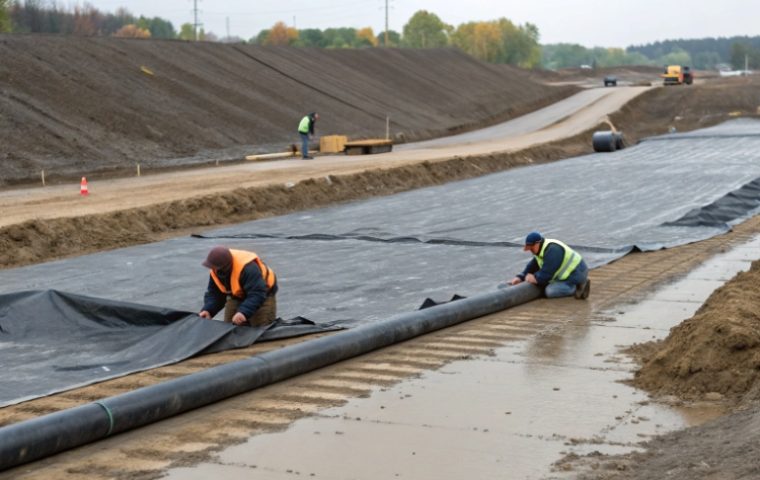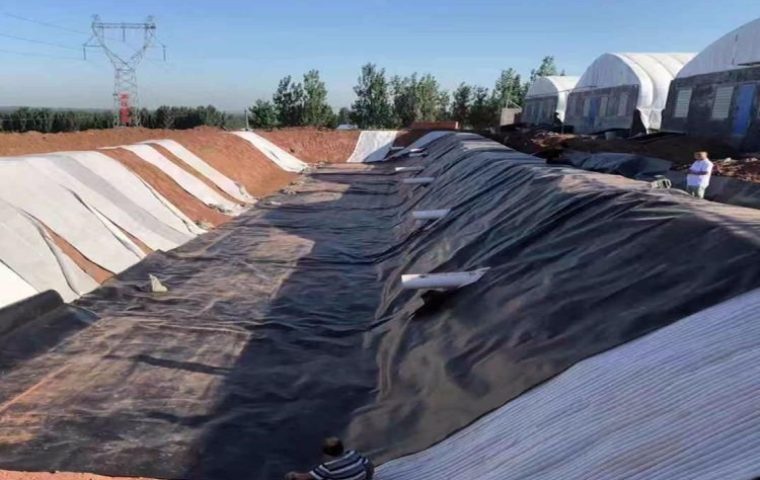Confused by geomembrane and geogrid? Choosing the wrong one can lead to project failure. Your goal is either creating a leak-proof barrier or reinforcing soil—let's clarify which you need.
Choose a geomembrane if you need an impermeable barrier to contain liquids or gases, like in landfills or ponds. Select a geogrid if your goal is to reinforce and stabilize soil for applications such as roads, slopes, or retaining walls. The choice is containment versus reinforcement.**
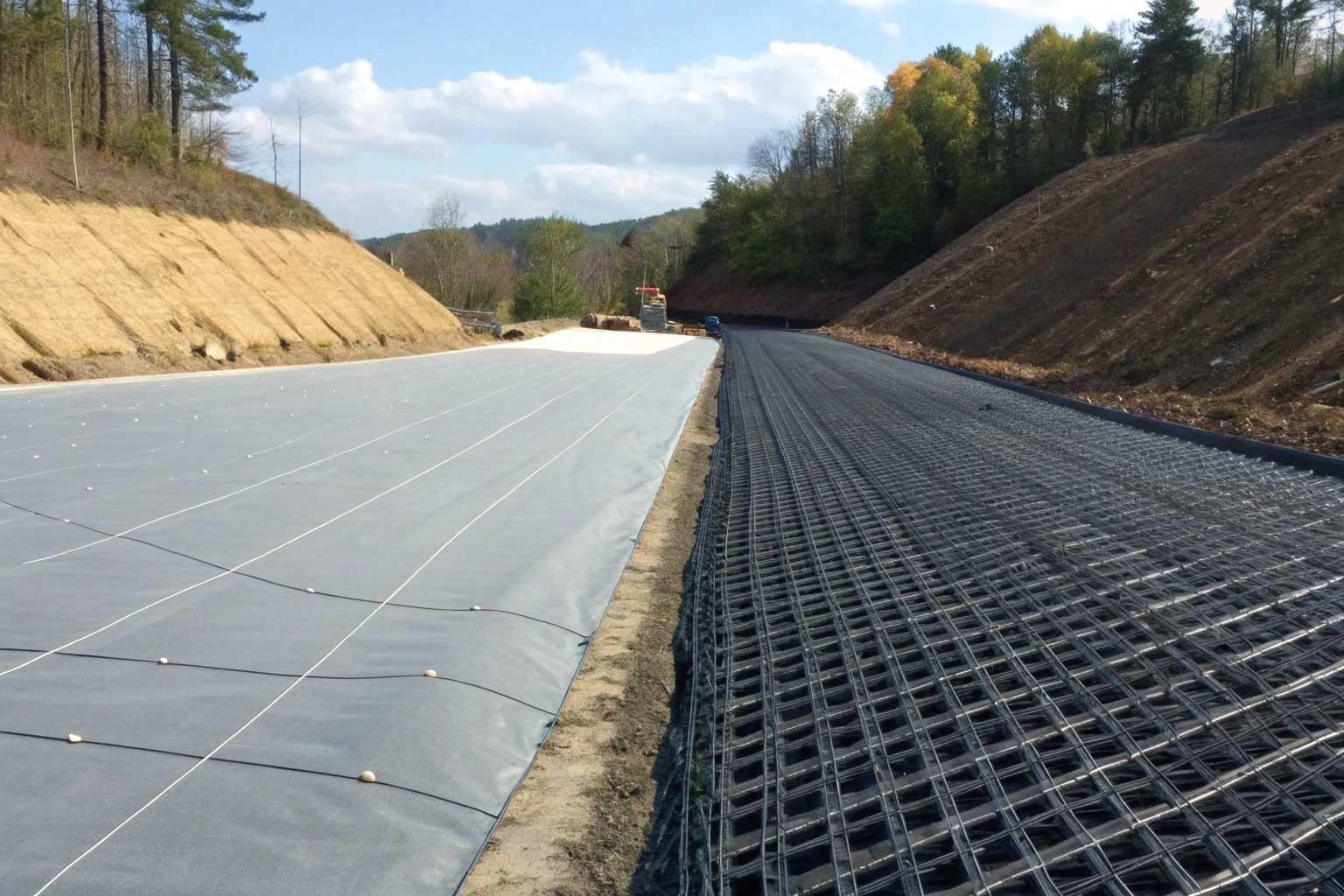
While that simple distinction is a great starting point, your project's success depends on understanding the specific material properties and design criteria for each. Knowing how they function is crucial for your sourcing and import decisions. Let's dive into the key differences so you can specify your order with confidence.
What are the key differences between geomembrane and geogrid materials?
Are you comparing materials without understanding their core functions? A mistake here could compromise your project's integrity, leading to performance issues and unexpected costs down the line.
A geomembrane is a continuous, solid polymer sheet designed to be impermeable, effectively blocking fluids. In contrast, a geogrid is an open, grid-like structure of high-strength ribs designed to interlock with and reinforce soil, not to contain liquids or gases.
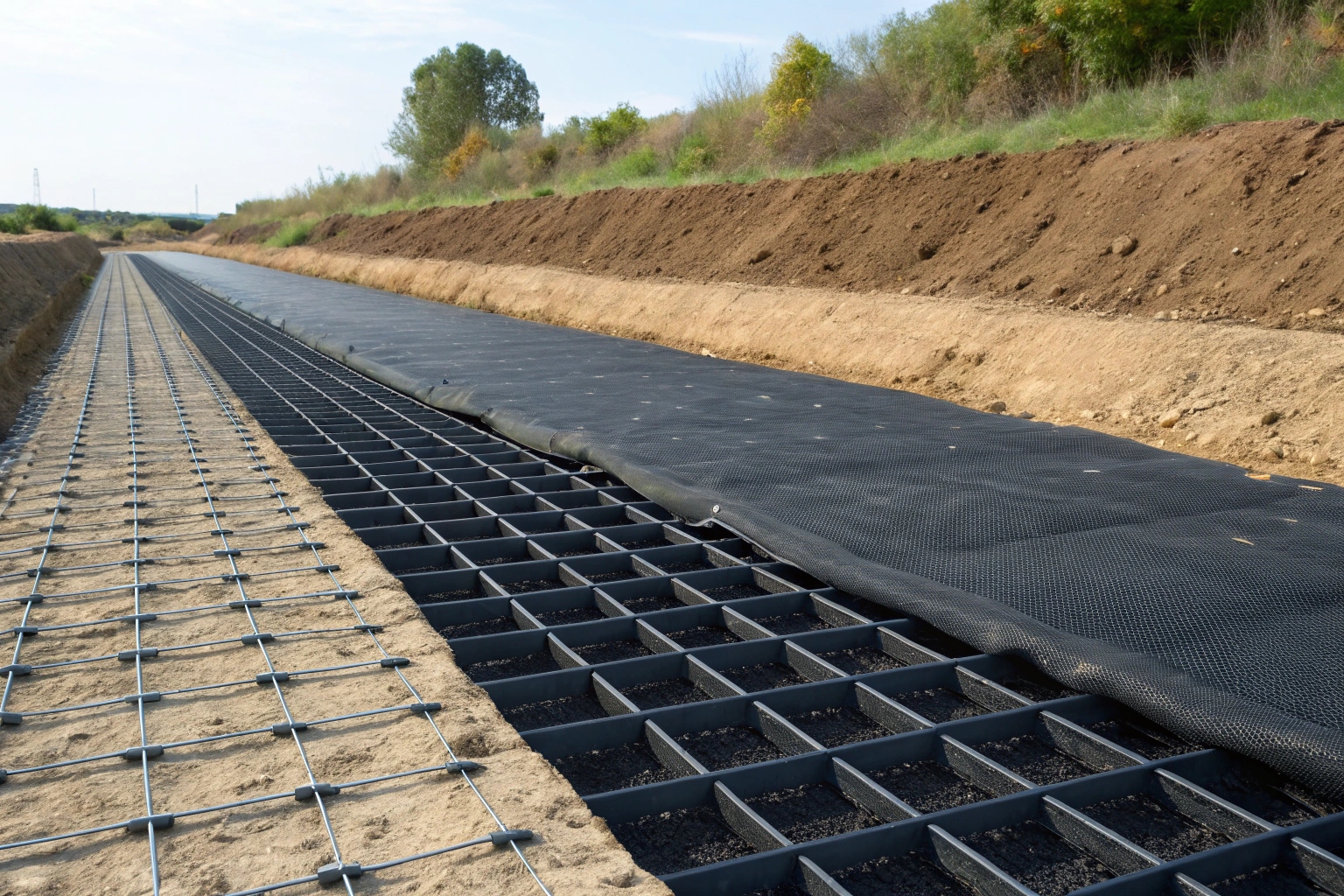
The fundamental difference lies in their structure and how they interact with their environment. A geomembrane's primary purpose is separation and containment, acting as a hydraulic barrier. A geogrid, on the other hand, is engineered for mechanical interaction, confining and strengthening soil or aggregate through its apertures.
This distinction dictates every aspect of their design, from polymer selection to performance testing. For a geomembrane, you prioritize metrics like puncture resistance and chemical durability. For a geogrid, you focus on tensile strength, junction efficiency, and creep resistance under long-term load.
Here is a clear breakdown of their core differences:
| Feature | Geomembrane | Geogrid |
|---|---|---|
| Primary Function | Containment (Impermeable Barrier) | Reinforcement (Soil Strengthening) |
| Structure | Solid, continuous polymer sheet | Open, grid-like structure with apertures |
| Material Action | Blocks fluid and gas flow | Interlocks with soil particles to add strength |
| Key Metric | Permeability (e.g., <1x10⁻¹² cm/s) | Tensile Strength at specific strains (kN/m) |
How does geomembrane provide impermeability for ponds, reservoirs, and landfills?
Need to guarantee a leak-proof containment system? Even a small breach can lead to environmental contamination, water loss, and costly remediation, undermining the entire purpose of your project.
A geomembrane achieves impermeability through its extremely low-permeability polymer composition (HDPE, LLDPE) and thermally welded seams. This process creates a single, monolithic barrier that prevents the migration of liquids and dissolved contaminants from one side to the other, ensuring complete containment.
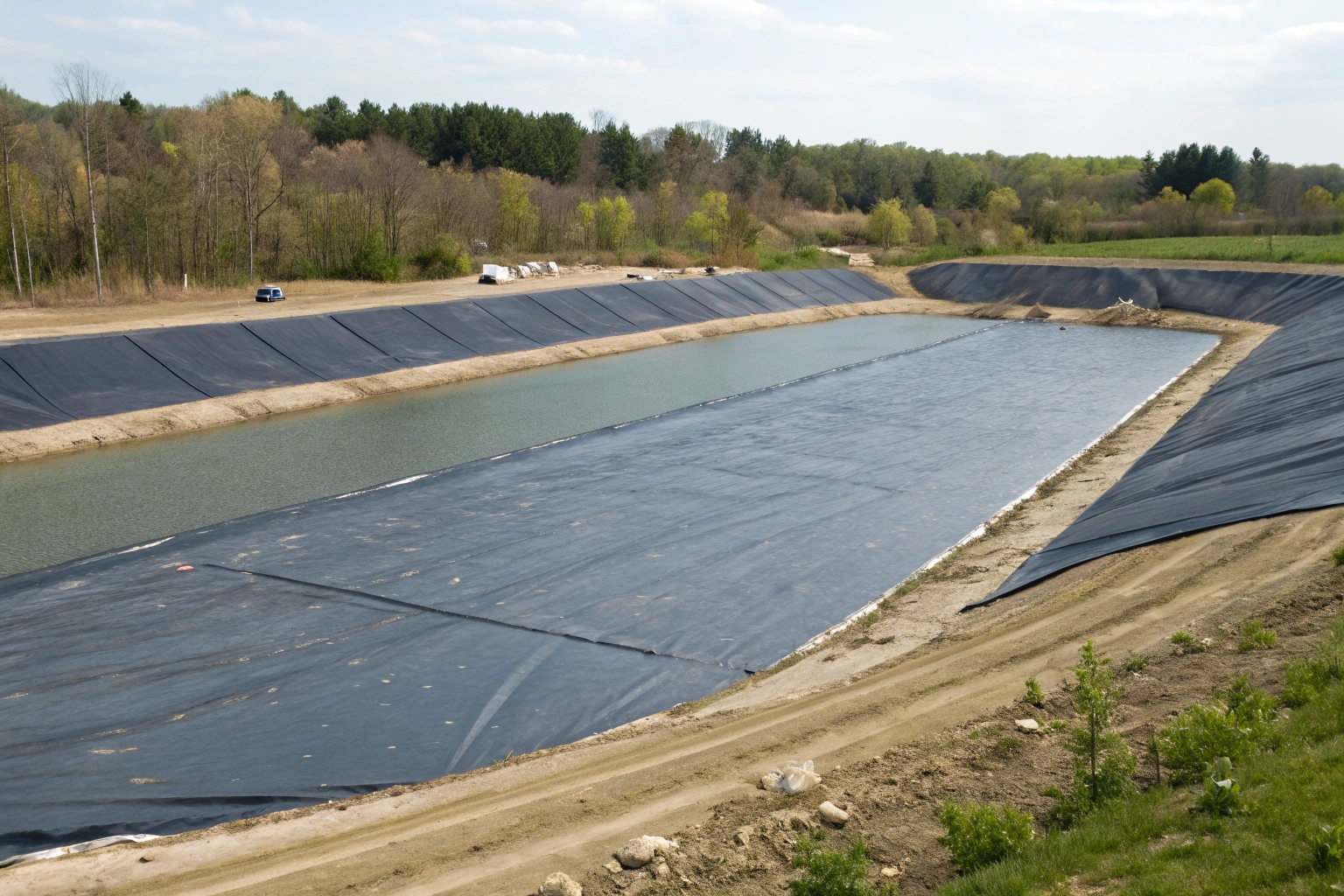
The effectiveness of a geomembrane liner relies on two critical factors: its material integrity and its seam quality.
Material Integrity
Geomembranes are manufactured from high-quality polymers like High-Density Polyethylene (HDPE) or Linear Low-Density Polyethylene (LLDPE). These materials have a dense molecular structure that is inherently resistant to fluid passage. With a hydraulic conductivity as low as 10⁻¹³ cm/s, a properly installed liner is virtually impermeable, preventing leakage far more effectively than traditional compacted clay or concrete liners. The material must also resist chemical attack, UV degradation, and physical stress to maintain this barrier over its design life.
Seam Quality
Individual geomembrane panels are delivered in large rolls and must be joined on-site. This is typically done through thermal fusion welding (hot wedge or extrusion welding), where the panel edges are melted and fused under pressure. This creates a continuous, molecularly bonded seam that is often as strong as the parent material itself. Rigorous quality control, including non-destructive and destructive seam testing, is essential to verify that the entire liner system is a single, leak-free barrier.
How does geogrid reinforce soil and improve slope or road stability?
Is your project built on weak soil or a steep slope? Without proper reinforcement, you risk structural failure from settlement, erosion, or slippage, leading to dangerous and expensive repairs.
A geogrid reinforces soil by interlocking with aggregate or soil particles through its apertures. When a load is applied, the grid's high-tensile ribs transfer stress across a wider area, confining the soil and significantly increasing its shear strength and load-bearing capacity.
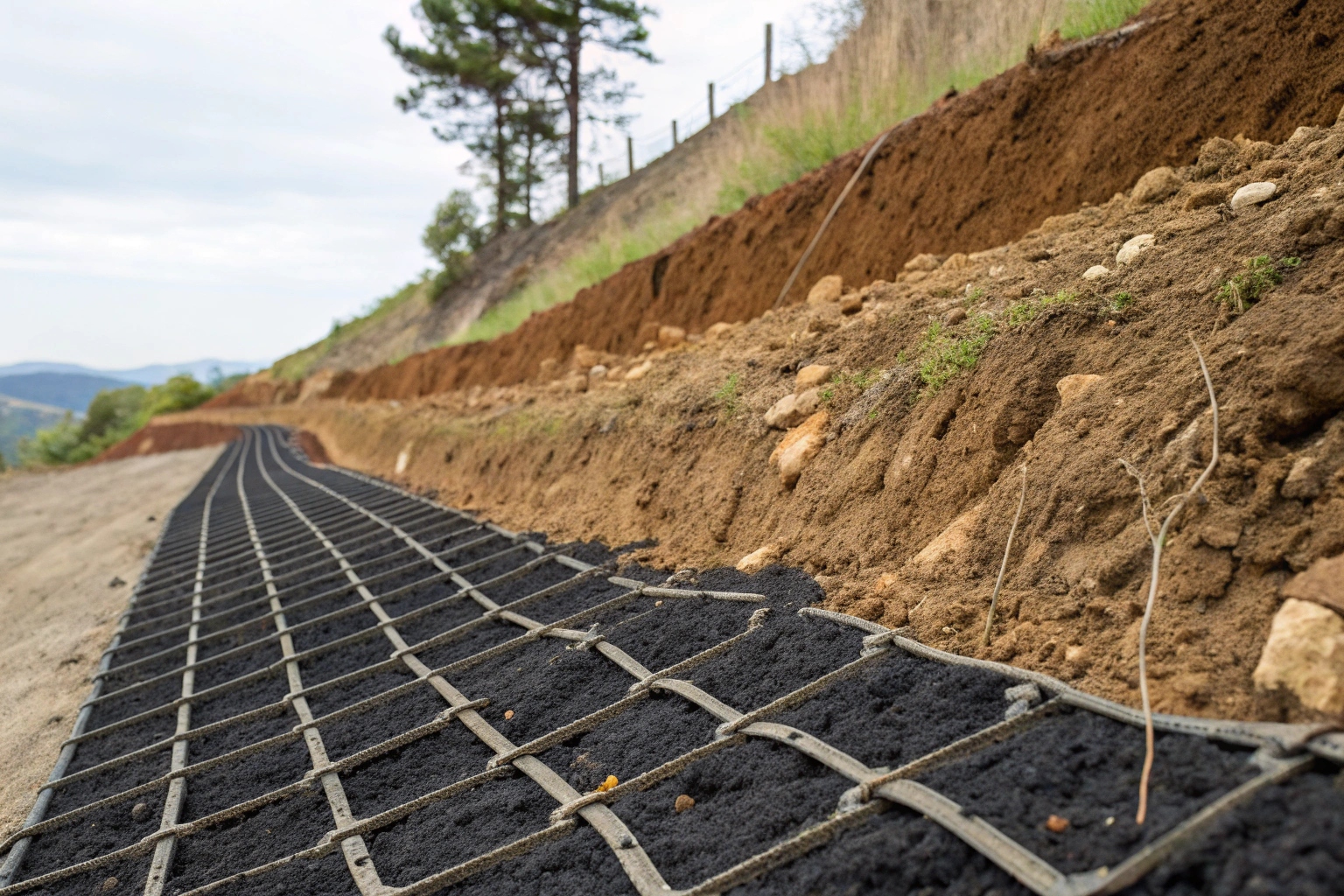
A geogrid improves soil stability through two primary mechanisms: confinement and tensioned membrane effect. Think of it as adding a high-strength skeleton into the soil mass.
Confinement and Interlocking
When aggregate or soil is compacted over a geogrid, the particles penetrate and lock into the grid's apertures. This confinement prevents the lateral movement of particles under load. This interlocking action creates a composite material—the geogrid-soil matrix—that is much stronger and stiffer than the soil alone. This is especially effective in road base applications, where it reduces rutting and extends the pavement's service life.
Tensioned Membrane Effect
In applications like slope stabilization or retaining walls, the geogrid acts as a tensioned member. As the soil mass tries to move or deform, it puts the geogrid ribs in tension. The grid's high tensile strength resists these forces, holding the soil in place and preventing failure. This allows for the construction of steeper slopes and taller walls than would be possible with unreinforced soil, saving space and material costs.
Can geomembrane and geogrid be used together in the same project?
What if your project demands both leak prevention and structural stability? Overlooking one function for the other can lead to a system that fails either hydraulically or mechanically.
Yes, geomembranes and geogrids are frequently used together in composite systems. A typical application involves placing a geogrid beneath a geomembrane to stabilize weak subgrade soil, providing a stable foundation for the liner and preventing stress-related damage.
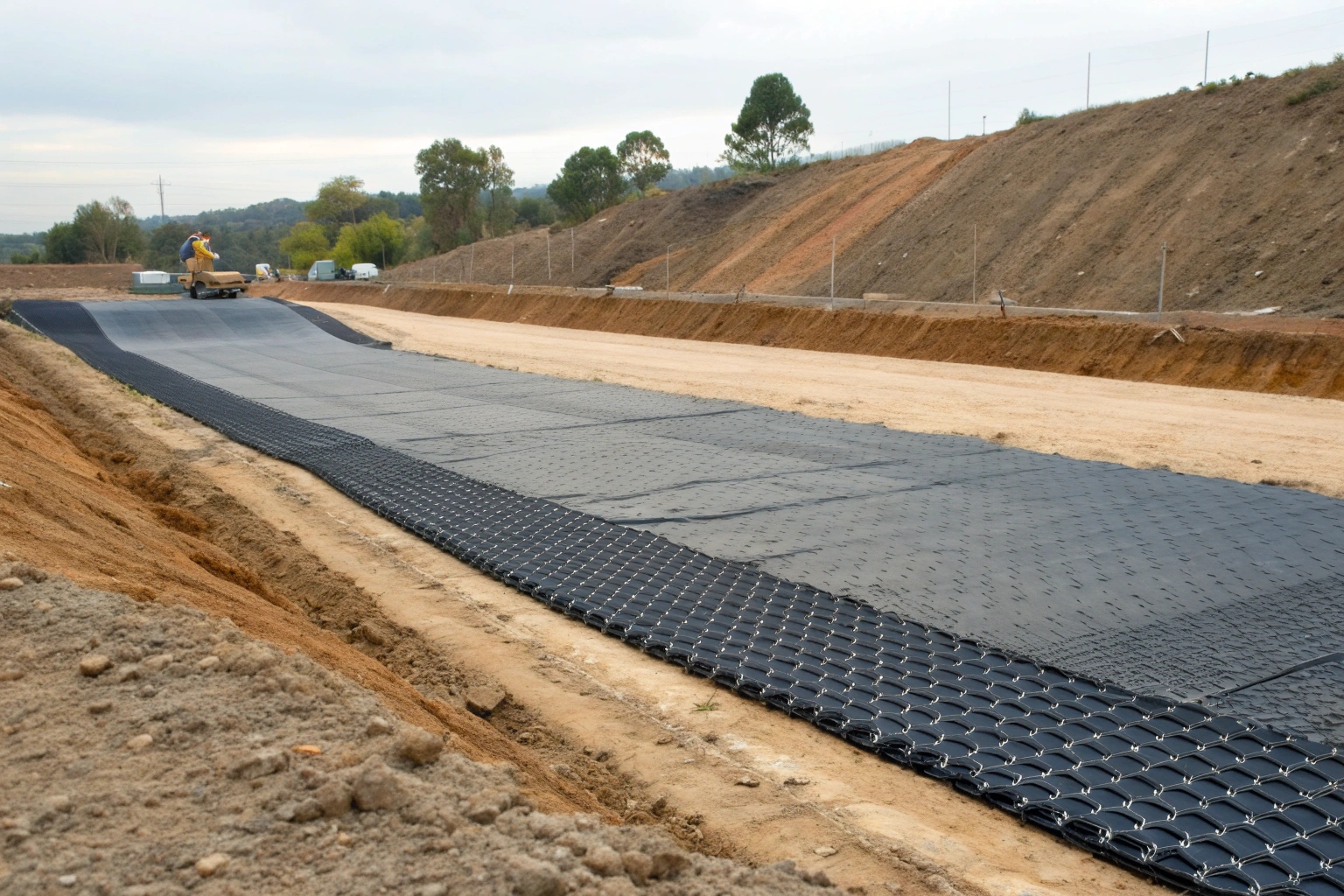
Combining these two geosynthetics allows you to address multiple engineering challenges simultaneously, creating a more robust and reliable system. The key is to leverage each material's primary function to protect and enhance the other.
Common Composite Applications
- Landfill and Mining Slopes: In a landfill cell or heap leach pad, a geomembrane provides the critical impermeable barrier. A geogrid is installed beneath it to reinforce the slope, preventing sliding or deformation that could tear or over-stress the geomembrane liner.
- Canals and Reservoirs on Soft Ground: When building a water containment structure on weak or unstable soil, a geogrid stabilizes the foundation, reducing differential settlement. The geomembrane is then installed over this stable base to provide the necessary waterproofing.
- Reinforced Embankments: For embankments that also need to control seepage, layers of geogrid build structural integrity while a strategically placed geomembrane liner prevents internal erosion or water loss.
By using both, the geogrid protects the geomembrane from mechanical stress, while the geomembrane performs its containment function without being compromised by an unstable foundation.
Conclusion
The choice is simple: use a geomembrane for containment and a geogrid for reinforcement. Knowing this difference is the first step to sourcing the right material for your project's success.

